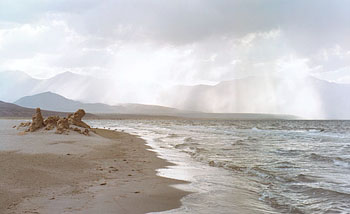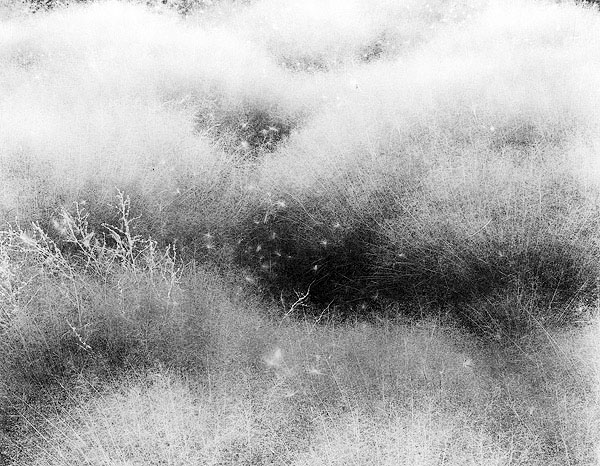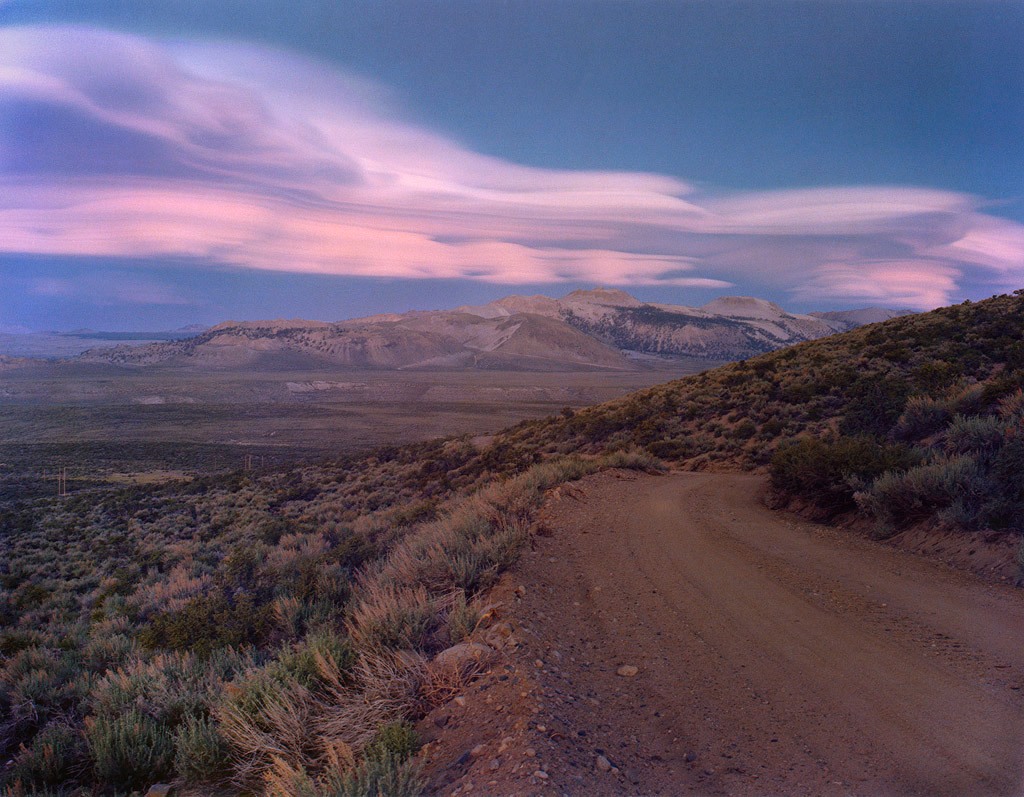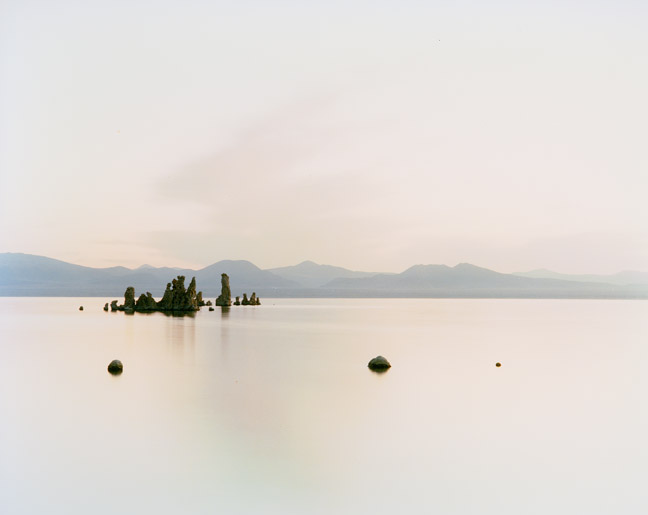A touring photographic exhibition and book with work by 48 photographers spanning 110 years of photography of eastern Califorina's Mono Lake. Exhibit curated by photographers Stephen Johnson, Al Weber and Don Worth.
Book: At Mono Lake Exhibit Catalog
At Mono Lake
Stephen Johnson, editor and designer
$100 Limited Edition signed and numbered case bound in Irish linen
This is a limited edition of the classic 1983 catalog from the exhibition. Featuring the work of Ansel Adams, Brett Weston, Timothy O'Sullivan, Edward Curtis, Ted Orland, Don Worth, Philip Hyde, Dave Bohn, Clinton Smith, Stephen Johnson, Robert Dawson and others. Softbound edition has been out of print since 1986. Available here only. 88 pages, with 68 duotone and color photographs.
Mono Lake: The Artist and the Land
Stephen Johnson. 2015
34 pages from from Steve’s 1982 Graduate Thesis with follow-up from 2015. 8.5x 10.75.
NEW PRODUCT: Mono Lake Folio
The Exhibition
Exhibition Introduction
With this exhibit we hope to draw attention to the unique visual qualities of the Mono Basin and its value as an irreplaceable American natural resource. Biologically, geologically and visually, Mono Lake is a spectacular sight to behold.
The lake lies on Highway 395, three hundred miles north of Los Angeles, just east of Yosemite National Park at the base of the eastern escarpment of the Sierra Nevada. This saline lake is one of the oldest continually existing lakes on the continent, most likely at least one million years old.
This huge inland sea (62 square miles) has gradually become very alkaline as the result of minute quantities of salts carried into the lake from its tributary steams and volcanic springs within the lake itself. Without an outlet, the salts have continued to build and Mono is presently twice as saline and ten times as salty as the sea. Its soft waters are famous for their buoyant swimming.
A fiery chapter in Mono's recent history began with the volcanic eruption of the Mono Craters and subsequent activity that formed Negit Island, Paoha Island and Black Point. Throughout its history Negit Island has provided a home and safe breeding ground for 95% of the state's California gulls. The lake has also provided a necessary resting place and food source for millions of migratory birds as well as the home for a unique species of brine shrimp Artemia Monica.
Surrounding the lake are strange white towers known as tufa that are actually carbonate deposits left by freshwater springs that once bubbled under Mono's waters. These now-exposed towers stand as silent reminders of higher water levels of the recent past.
In 1940 the Los Angeles Department of Water and Power began water exports from the Mono basin, diverting the lake's main sources of fresh water. Since that time the lake has been dropping due to unreplenished evaporation, at the rate of one foot per year and since 1970 at two feet per year.
Mono Lake has now dropped over 43 vertical feet and left 15,000 acres of former lakebed exposed. As a result a land bridge has formed to Negit Island, providing access for coyotes and other predators to prey on nesting gulls, and has destroyed this state-protected rookery.
The exposed lakebed has left vast expanses of alkaline dust free to be blown by the high winds of the area and has created huge dust storms. As the water recedes its alkalinity increases, threatening the brine shrimp and consequently the gulls. Moreover, with less fresh water in the area, migratory birds are likely to turn this one time oasis of food and water a less welcome refuge.
This exhibition is not a discussion of water rights or any other of the legal questions involved the continuing destruction of Mono Lake. It is a visual statement about a splendid ancient place by some of those who love it deeply. "At Mono Lake" portrays an area that has been a source of inspiration and solace for many who have visited and worked there over the years.
–Stephen Johnson
1980
Exhibiton Sponsors
National Endowment for the Arts, Friends of the Earth Foundation, the Polaroid Foundation, Sierra Club Foundation, the Mono Lake Committee.
Original Exhibition Poster by Brett Weston
California Academy of Sciences Installation. Golden Gate Park. San Francsico, CA. 1984.
Past Itinerary
March 1980
Crocker Art Museum
Sacramento California
June-September 1980
Los Angeles County Museum of Natural History
Los Angeles, CaliforniaOctober-November 1980
San Diego Museum of Natural History
Balboa Park, San Diego, CaliforniaMarch-April 1981
Hartnel College Gallery
Salinas, CaliforniaJune-July 1981
Arts Chateau
Butte, MontanaAugust 1981
Paris Square
Great Falls, MontanaSeptember-October 1981
Hockaday Center for the Arts
Kalispel, MontanaNovember-December 1981
Arapaho College Art Gallery
Littleton, ColoradoJanuary-February 1982
McAllen International Museum
McAllen, Texas
March-April 1982
Hearst Art Gallery, St. Mary's College
Moraga, California
July-August 1982
Museum of Arts and Sciences
Macon, GeorgiaSeptember-October 1982
Braithwaite Fine Arts Gallery
Cedar City. UtahNovember 1982
Humbolt Cultural Center
Eureka, CaliforniaFebruary-March 1983
Victoria Regional Museum
Victoria, TexasJune-October 1983
California Academy of Sciences
Golden Gate Park, San Francisco, CaliforniaJanuary-March 1988
Fresno Metropolitan Museum
Fresno, CaliforniaJanuary-February 1992
Fullerton Museum Center
Fullerton, CaliforniaJune 1992 to present
USFS Mono Lake Visitor's Center
Lee Vining California
Photographs
Contemporary











